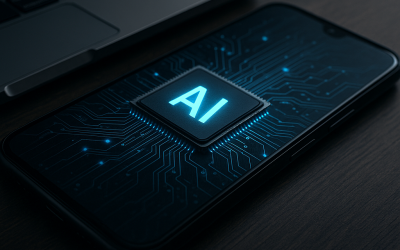Apple’s calculated hesitation to lead in artificial intelligence is less about technological limits and more about doubling down on its real competitive advantage: ecosystem lock-in. In this article, we’ll dissect Apple’s AI strategy, why it’s not chasing the generative AI hype, and how its choices reveal a long-term play for user retention and control, not industry-defining innovation.
The AI Race: Apple’s Calculated Absence
While competitors like Google and Microsoft scramble to outpace each other in generative AI, Apple’s conspicuous absence from the AI arms race is not a sign of weakness or lack of capability. Instead, it’s a deliberate move. Apple has the resources, talent, and data to compete at the cutting edge of AI, but it chooses not to. This is not a technical gap—it’s a strategic decision rooted in risk management and brand positioning.
Apple’s public AI initiatives—think Siri, on-device photo recognition, and privacy-focused machine learning—are incremental, not disruptive. The company avoids the headline-grabbing, sometimes reckless, deployment of large language models and open-ended generative systems. Instead, Apple’s AI is tightly integrated, invisible, and always subordinate to the broader Apple experience.
This approach is not accidental. Apple’s leadership understands that true AI leadership would require openness, rapid iteration, and a willingness to cede some control—traits fundamentally at odds with Apple’s tightly managed, vertically integrated ecosystem. The company’s reluctance to lead in AI is a bet that users value seamlessness and privacy more than bleeding-edge features.
Ecosystem Lock-In: The Real Moat
Apple’s business model is built on one thing: lock-in. Every product, service, and update is designed to make it harder for users to leave. The iPhone is the hub, but the real power comes from the network of devices, services, and proprietary standards that surround it. AirDrop, iMessage, Apple Watch, AirPods, iCloud, and the App Store all reinforce this gravitational pull.
AI, in Apple’s world, is not a product—it’s an adhesive. Features like on-device intelligence, personalized recommendations, and context-aware automation are engineered to make the Apple ecosystem more indispensable, not to redefine what AI can do. Apple’s AI is intentionally limited in scope and ambition, because the goal is not to disrupt, but to entrench.
Contrast this with Google’s or Microsoft’s approach, where AI is a platform for new business models, developer ecosystems, and open experimentation. Apple’s refusal to open its AI infrastructure to third parties, or to build general-purpose AI APIs, is a clear signal: innovation is welcome, as long as it happens within Apple’s walled garden.
For users, this means the “magic” of Apple’s AI is only available if you buy in completely. For developers and partners, it means innovation is always on Apple’s terms. For Apple, it means higher switching costs, more predictable revenue, and tighter control over the user experience.
Innovation Versus Control: The Trade-Off
Apple’s reluctance to lead in AI is often framed as conservatism or risk aversion, but it’s more accurate to see it as a calculated trade-off. True AI leadership—especially in generative models—requires a willingness to experiment in public, accept failure, and sometimes break things. Apple’s brand is built on the opposite: stability, privacy, and seamless integration.
By focusing on incremental, user-facing AI features, Apple avoids the reputational risks that have plagued other tech giants: hallucinating chatbots, privacy breaches, and ethical scandals. Apple’s AI is “safe” because it’s tightly controlled and rarely exposed to the unpredictable chaos of the open internet.
This comes at a cost. Apple is ceding the narrative—and potentially the future platform—of AI to its competitors. If generative AI becomes the next major computing paradigm, Apple risks being seen as a follower, not a leader. But Apple is betting that most users don’t care who has the most advanced AI—they care about what works, what’s private, and what keeps their digital lives simple.
The Real Risks: Complacency and Disruption
Apple’s strategy is not without risk. By prioritizing ecosystem lock-in over true AI innovation, Apple is making a bet that its walled garden will remain attractive enough to keep users from defecting to more open, AI-driven platforms. But history is littered with companies that mistook user inertia for loyalty.
If a competitor can offer a genuinely superior AI experience—one that is open, interoperable, and transformative—Apple’s incrementalism could backfire. Users may begin to see the ecosystem not as a benefit, but as a constraint. Developers may tire of Apple’s restrictions and flock to more open platforms. Regulators, already skeptical of Apple’s gatekeeping, may see its AI strategy as further evidence of anti-competitive behavior.
Moreover, the pace of AI innovation is accelerating. What is “good enough” today may be obsolete tomorrow. Apple’s reluctance to invest in foundational AI research, or to open its ecosystem to outside innovation, could leave it vulnerable to disruption from unexpected quarters—startups, open-source projects, or even government-backed initiatives.
Signals to Watch: What Comes Next?
Strategic leaders should watch for several key signals in Apple’s evolving AI posture:
- Acquisitions and talent moves: Is Apple quietly buying AI startups or recruiting top researchers, even if it’s not publicizing the results?
- Shifts in developer policy: Does Apple begin to open up its AI frameworks, or does it double down on closed, proprietary approaches?
- User migration patterns: Are power users and developers starting to leave the Apple ecosystem for more AI-centric platforms?
- Regulatory scrutiny: Do antitrust investigations focus on Apple’s use of AI to reinforce its ecosystem lock-in?
- Consumer sentiment: Does the narrative around Apple shift from “innovator” to “laggard” as AI becomes more central to daily computing?
Each of these signals will reveal whether Apple’s bet on ecosystem over innovation is sustainable—or whether it’s a slow-motion strategic error.
Conclusion
Apple’s reluctance to lead in AI is not a failure of imagination, but a deliberate bet on ecosystem lock-in as its core advantage. While this strategy protects Apple’s margins and user base today, it risks long-term irrelevance if the AI paradigm shifts faster than Apple’s comfort zone allows. Leaders should watch Apple’s next moves closely—because what looks like caution may soon look like complacency.



0 Comments